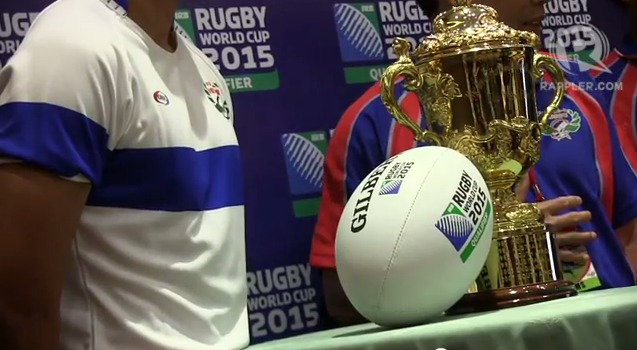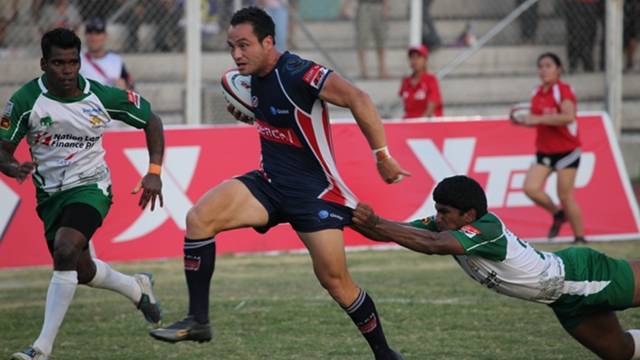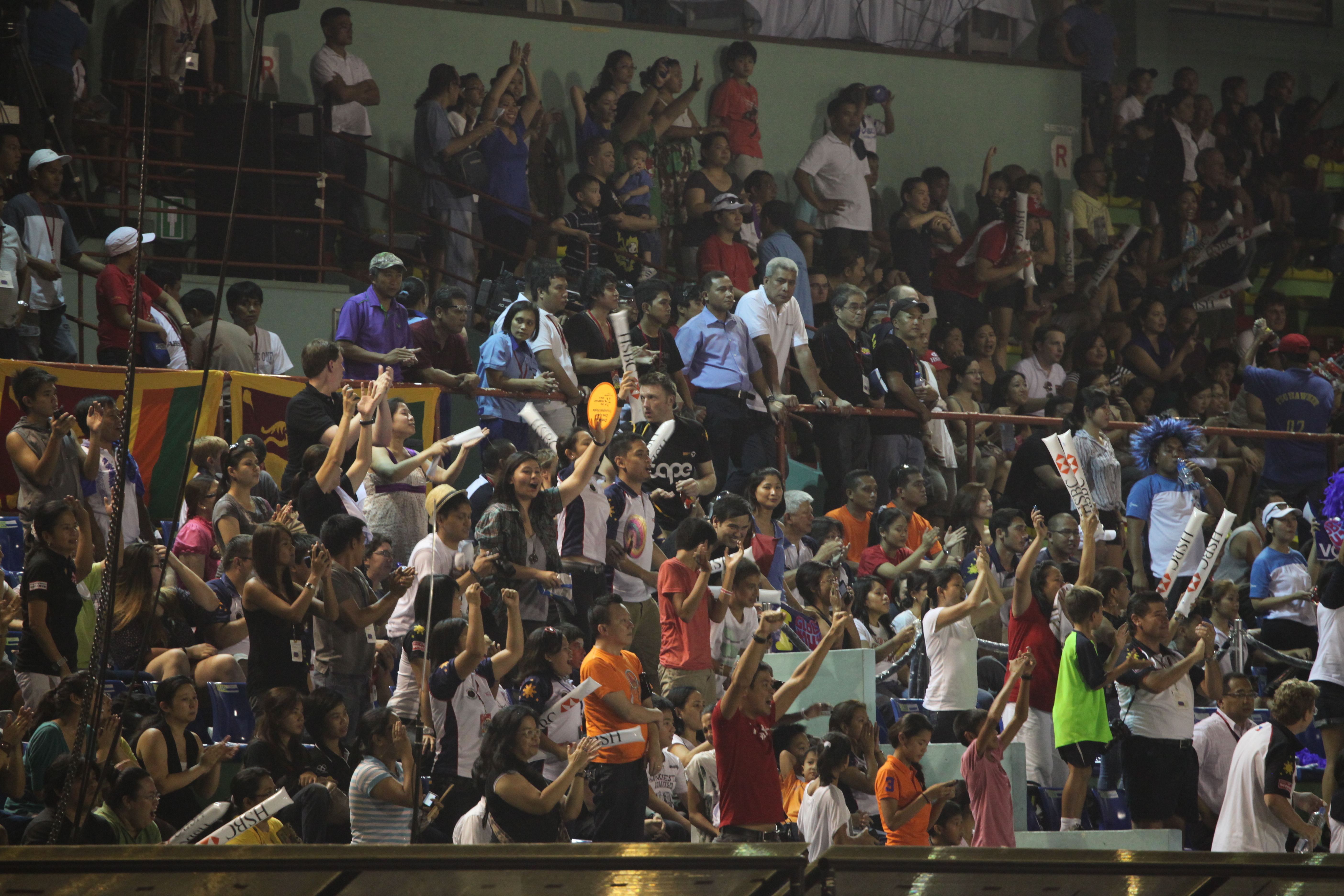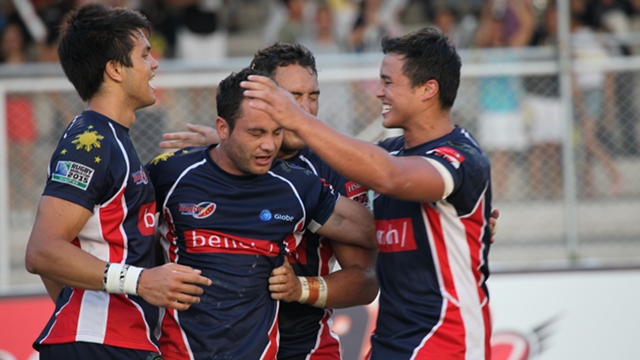SUMMARY
This is AI generated summarization, which may have errors. For context, always refer to the full article.

MANILA, Philippines – I started playing rugby freshman year of high school because my homeroom teacher was the coach and I didn’t have a spring sport yet.
After a month every soft tissue on my body was either bleeding or bruised and I thought, “I’m done with this sport, this game is for crazy people, it’s just a semi-organized fight between 30 people!” 15 years, 7 clubs, and 4 countries later I’m preparing for the start of another 15s season, my third in the Philippines.
This is the first season the top 15s division — PRFU 15s — will feature Cebu. So on Saturday, May 5th, my club Nomads will travel down to Cebu to face the Cebu Dragons at Cebu International School to kick off the 2012 season.
Rugby is an international game. Since graduating from college I’ve lived in 4 different countries and 7 different cities and have always found a club. With my history of moving, it’s fitting the club I play for and captained is called the Manila Nomads.
In any major city in the world I’ve found that joining a rugby club is the fastest way to start meeting people and building a social network. Join a rugby club and you’ve got 40 instant friends anywhere you go!
Rugby in the Philippines
In the Philippines we play 3 different forms of Rugby Union, Fifteens, Tens, and Sevens, denoting the number of players on a team.
Sevens is the more widely played version of the sport. It’s fast-paced, high-scoring, and easy to understand. These days Sevens is the form the International Rugby Board is using as the entry point to grow a new generation of fans and players. But Sevens is a backs game through and through, there’s no room for the slow-footed in Sevens.
Tens is a non-IRB approved version of the game that has grown out of the isolated expat rugby outposts of Southeast Asia, the only variant of the game that has not originated in a traditionally rugby-playing nation.
In the past, the rugby clubs of Southeast Asia had little to no domestic competitors but touring was costly and time-consuming. Rugby Tens was the compromise they found for playing matches despite being constantly short-handed while still leaving some room on the field for slower, more traditional forwards play than Sevens. The biggest and longest-running tournament in the Philippines, held every year in March, is still the Manila 10s.
To the sport’s purists though, fifteens is The Game, the only one that doesn’t require a modifier. Someone might say “I’m playing Sevens today” or “I’m playing Tens today” but when one says “I’m playing rugby today” it is assumed that Fifteens is the game.
In the minds of people who have grown up playing the game, we still think of it as “real” rugby. It’s the game as it’s meant to be played: 8 forwards, 7 backs, 80 minutes long, confrontational, tactical, mentally-demanding, and physically grueling.
It’s a game that favors specialization, from the often light-bodied and light-footed speedy backs on the wings, to the lumbering, wrestling, giants of the tight five, there’s space in the game for every body shape and athletic disposition.
The sport is starting to boom in popularity locally. The National Men’s Teams success, televised in the Philippines and internationally can only provide a further jolt to the games popularity.
Until 2003, Nomads was the only rugby team in the country, relying on passing US Navy ships and touring sides from other countries to get a game. Just nine years later, there are now 3 teams in the top division: Nomads, Alabang Eagles, and recently-included Cebu Dragons. There are also 3 in the second division, and 4 in the third division.
Local players
Each of the first division teams has a distinct identity and character.
Manila Nomads has its wind-tossed and quirky group of eccentric expats, both long and short-term. Alabang Eagles is mainly made up of former international school students from Brent, ISM, and British School and a hard-hitting contingent of Papua New Guineans studying at Adventist University of the Philippines. Cebu Dragons, the newest club of the 3, is made up of a mix of local Filipinos who learned the game in the past few years, a few expats, and some Filipinos who grew up abroad and brought the game back to Cebu when they came home.
The third division is where the sport’s potential in the country really lies though. All four teams in that division are completely comprised of local players who learned the game on the hard-scrabble pitch at Ultra in Pasig in the past few years.
Globe’s corporate team, the Makati Mavericks, Bisons, and Tarsiers are all products of PRFU’s grassroots development Rugby 101 program at Ultra.
PRFU 15s
For the Mavericks, Bisons, and Tarsiers, this will be their introduction to ‘real’ rugby, having gone through their first Sevens and Tens seasons in the past 9 months.
Fifteens is a game that produces strong rivalries, rivalries make great games, regardless of the standard, and great games make for a popular sport. Globe and Mavericks have already met twice in finals for their division in sevens and tens and a third matchup in a fifteens final will cement their rivalry.
In the top division the Eagles-Nomads rivalry is the foundation the domestic club scene has been built upon. March’s Manila 10s final has only further deepened the stakes.
The two domestic clubs beat out 18 other teams from all over the world to meet in the Plate final. Nomads entered the final not having conceded a point all tournament while Eagles had scored more points than any other team. In the end Nomads won in a tense match 5-0 that lived up to the great history of the clubs’ rivalries.
The two teams play directly opposed styles. While Nomads plays a direct, forwards-based style, looking to grind out results, territory, and possession, the Eagles play expansively looking to move the ball through their fast and fit backs.
Both teams feature multiple players with international appearances for the Volcanoes in the past, and both will be looking to meet each other again in this year’s final.
Cebu, in their first year in the competition, will be looking to play the spoiler and sneak into the final on an upset.
The JML PRFU 15s runs from May 5th to June 9th :
2:15 pm May 5 – Cebu Dragons vs. Manila Nomads (Cebu International School)
3 – 8 pm May 12 – JML PRFU 15s Rd. 2 (Nomads Sports Club, Paranaque)
3-8 pm May 19 – JML PRFU 15s Rd. 3 (Eagles’ Nest, Laguna)
3-8 pm May 26 – JML PRFU 15s Rd. 4 (Eagles’ Nest, Laguna)
TBD, June 2 – Cebu Dragons vs. Alabang Eagles (Cebu)
3-8 pm June 9 – JML PRFU 15s Finals (Nomads Sports Club, Paranaque) – Rappler.com
Related stories:
Add a comment
How does this make you feel?



There are no comments yet. Add your comment to start the conversation.